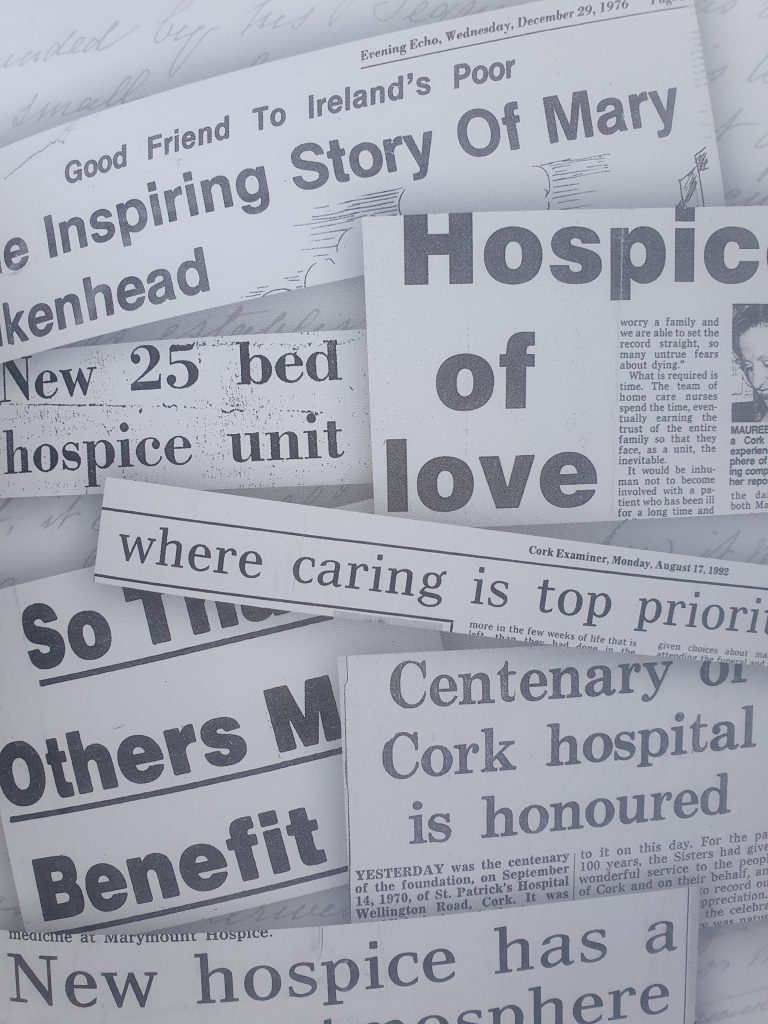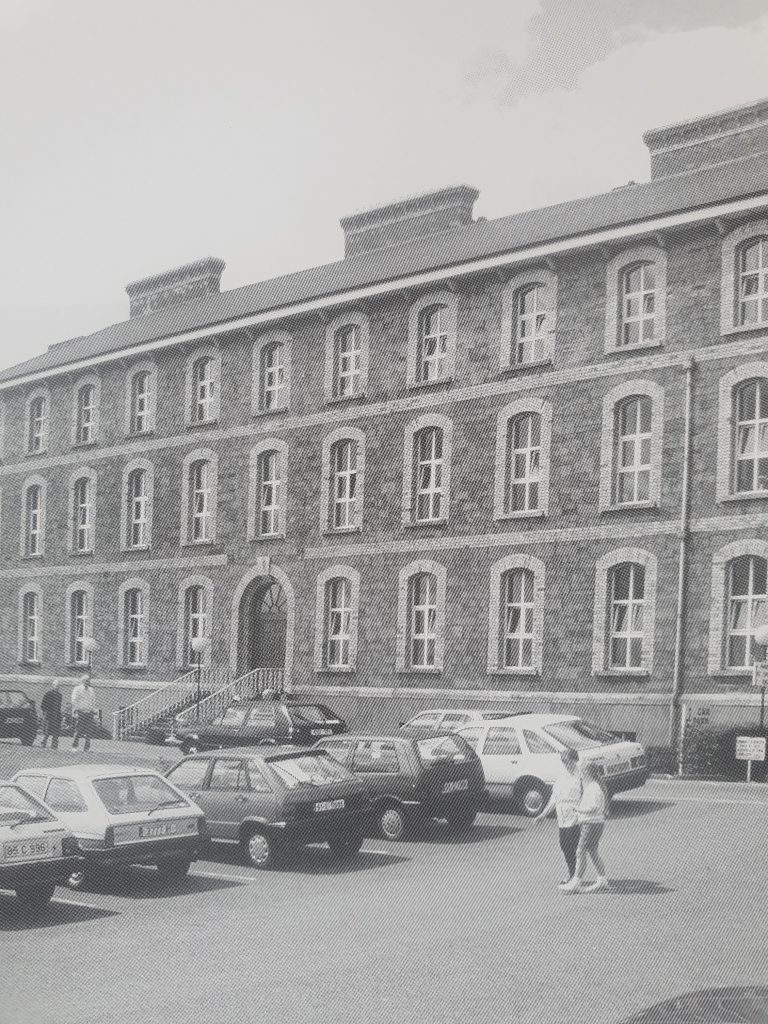Our History
A Doctor’s Dream
Early in December 1867, great excitement was created in a narrow and unfashionable street in Cork, by the rumour that an eccentric old gentleman, residing in the street, had been found dead. The bread man had noticed that the man had not taken in his bread and notified the police. They tried to gain admittance by knocking and thumping on the door. They eventually broke it open and forced an entrance. The crowd rushed in. At last the Rev. Father Delay, a curate in Passage and a close friend of the deceased made his appearance. He tried to enforce law and order.
In due time an inquest was held. From the condition of the body, it was determined that death had occurred about the 28th November, four days previous to the discovery of the corpse. This elderly gentleman’s name was Dr. Patrick Murphy. Dr. Murphy had studied for the medical profession. He possessed considerable talent, but at the very outset of his career, he seemed to abandon any desire to practise medicine. This was due to his concern for social justice and the welfare of the poor. He hoarded his money with the hope of comforting and sheltering poor sufferers from painful and incurable diseases. especially cancer. Cancer was a disease of extreme repulsiveness, and thus was neglected by the wider general public. He was generally spoken of as “Glory Murphy”. This title had its origin in his father’s calling. Dr. Murphy had been born and reared in a celebrated public house in Blackpool, kept by his father, and known as the “Sunburst of Erin”. The front door was surmounted by a signboard illustrating the title. “The Glory of the World” were the words added underneath the sign. From this, the house came to be commonly recognised as the “The Glory”, a title soon extended to the owner, and, as the years went on, to his son.


The Sisters of Charity had won Dr. Patrick Murphy’s admiration from an early stage. They had tended his father and sister on their deathbeds during the cholera epidemic of 1832. Dr. Murphy had owned a tan-yard and some house property. On the 13th August 184), he bequeathed all he possessed (except a few small legacies) to the Sisters of Charity, on the condition of their having established within two years from his demise, a hospital or room for cancer patients. In the event of their non-compliance with this condition, his property was to be divided by the Bishop amongst the other Catholic charities of the city.
Following Dr. Murphy’s death, Father Delay, Mr. Patrick Dunne, and one or two other friends, aware of Dr. Murphy’s intentions for the disposal of his property, lost no time in searching for his will. For days, no will was to be found.
Day after day, Fr. Delay with Mr. O’Keeffe, the solicitor, spent hours in the house, turning out old drawers and hiding places and poring over musty and dusty papers. Finding the will in the most unlikely of places, an overlooked old bandbox, their perseverance was rewarded. An attempt was made by some relatives to dispute this will, but this was overruled with little difficulty. Father Delay and Mr. Patrick Dunne took on the administration of the will.
Apart from the tan-yard and some house property, Dr. Murphy’s income was varied. It was reported that he went through the streets after dark, collecting horse manure and selling it. During all this time he was hoarding and denying himself, with one end steadily in view – helping Cork’s impoverished. The stock in the tan yard had now to be converted into money, and bank receipts and insurance policies were to be duly investigated. Rents, which were derived from old houses and stores in Murphy’s proprietorship, produced an income of about £300 per year. Without the untiring exertions of Fr. Delay and Mr. Dunne, Dr. Murphy’s affairs might have turned out very differently.
The sum, realised by the sale of Dr. Murphy’s property, was to be expended on the construction of a building for the care of cancer sufferers. In October 1868, the Superior General of the Sisters of Charity, Mother Francis Magdalen McCarthy and Mother Mary Camillus Sallinave came to the Cork Convent of St. Vincent’s to discuss the potential foundation of a hospital. Before leaving, both had agreed with Mother de Chantal, the Cork Superior, that a hospital was a good project to pursue, and directed that a suitable spot be sought out. The affairs were put into the hands of two young men, brothers Edmund and Peter O’Flynn. They were builders, who by their own industry and intelligence, had worked their way up from being house carpenters to their present position. They had succeeded well in a few small undertakings, but were eager for a contract that would bring them under the public eye, and thus create more work. Mother de Chantal expressed an interest in helping them on in the world.


The O’Flynn Brothers were committed to the task of finding a city site, and many a weary day did Edmund O’Flynn spend walking up hills and down hills, inspecting every plot that was to be let for building. At length, a field was found. beautifully situated in St. Patrick’s Parish, very near Victoria Barracks. It was on high ground, with a bright southern aspect. After some little difficulty, the contract to build the new Hospital was given to the O’Flynns. On the 8th May 1869, the first stone of the new Hospital was laid. Mother de Chantal, several Sisters from St. Vincent’s Convent, a few of their secular friends, Dr. Murphy’s
Executors, and Canon Browne from St. Patrick’s Parish, assembled for the occasion.
Further thought was given to the project by local Cork priests Rev. Canon Browne, Rev. John Delay, Rev. William Lane and Mr. Patrick Dunne. As building progressed, it became evident that the contemporary financial investment could not cover all the costs. However, Providence stepped in and a number of contributions were received. Mr. John Fitzgerald, a citizen of Cork, gave £800 towards the building. Mr. Richard Simpson of Dublin added £500 for the furnishing. Mr. Nicholas Murphy contributed £400 and the project team gratefully received other helpful donations.
Contribution: Some of the text presented here is taken from A Dream Unfolding: Portrait of St. Patrick’s Hospital & Marymount Hospice by Kieran McCarthy.

